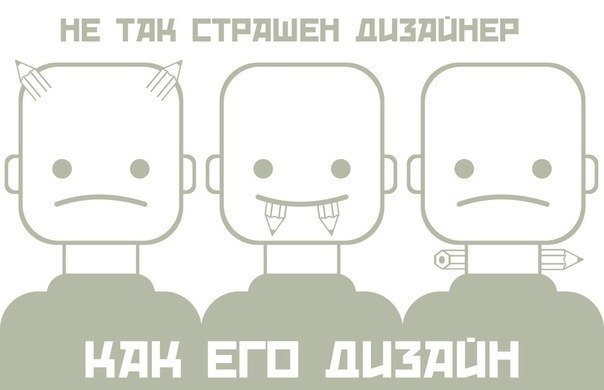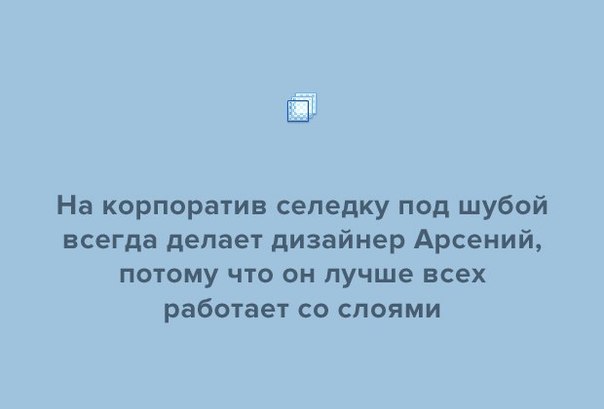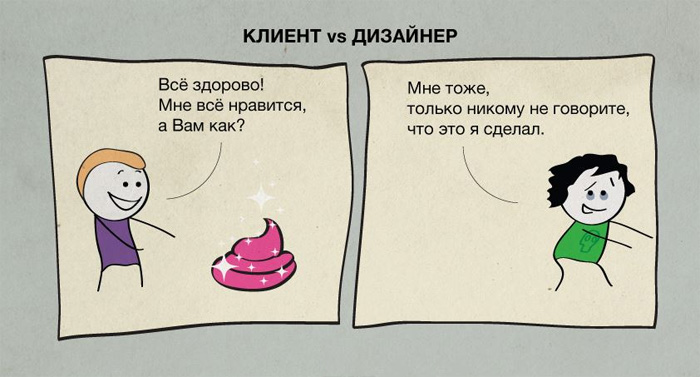The evolution of web design

Author: Alexey Shevtsov - art director of WebProfy (Kokoc Group).
The last few years, trends in web design consist of two components: modern ideas about beauty and technological capabilities of development. Each technology generated a short-term fashion, which, passing, left in the arsenal of developers and designers a new tool. For example, web design managed to get over gif-animation, parallax, mandatory adaptability. Some technologies became obsolete and disappeared, like flash, others evolved and became a natural part of the environment. For a long time, technology has been catching up with aesthetics, that is, the web design of the end of the last century simply had no tools. Alexey Shevtsov, art director of WebProfy, talks about how web design has changed since users chose phones for stationary computers.
Trends
We learned to look differently at the web interface, having enriched it with experience of interaction with mobile devices. For example, the menu is no longer required to be in the header: it can be on the side, bottom, or minimized into a small icon. Pages have become long, because smartphones have taught us to scroll, elements can be moved by analogy with the swipe.
')
Modern layout technology has given us much more freedom in handling the elements. Sites are increasingly reminiscent of interactive books. Almost everything that we can now come up with in the design of interfaces, we can and implement.

Designers learned how to make responsive websites, and then learned how to do them well. In addition, they learned to understand when an adaptive site is really needed, and when not.
Resources are becoming more technological, the download speed and user interaction with the site are important, regardless of what device he uses. Adaptive upgrade helps to adapt to different formats of the entrance to the site, both from a mobile device and from a laptop computer.
Individual approach is not only a trend, but also an important format of interaction with users. There are quite a few opportunities to collect information about a person, and having collected - to offer exactly the version of content that will be interesting to him. For example, during the customization of the content on the site, each page that he sees when logged in will be selected based on the information that the resource stores, based on previous user requests.
Customer wishes
Today, few customers are ready for unusual projects in web site design. Customers are afraid to take risks and do not ask for innovations, but choose a proven design, most often peeped from others. In the market rarely appears a new site template, even less often it becomes successful. But there are still unique examples: there are no sites like “Alfabank” in the banking sector and will not be in the near future. Appearance of the resource resembles a bank card, video design and a complex menu set it apart from the conservative market.

The main difficulty in working with clients is to ignore the tasks of the site. Sometimes the customer forgets that each site has specific goals, and therefore each design element is created in order to convey the content to a specific target audience in the most effective way.
For example, contractors are asked to make a website like a jewelry house, while they themselves sell baby strollers. The most popular request for copying the resource Apple - asks every third client. The increased demand for such a format speaks of changes in the tastes of “expensive and rich” in the direction of “simple and pure”. However, the striving for simplicity and conciseness in reality is not always sincere (as the painful need to savor a truffle when you just want potatoes with onions).
It is worth noting that every year customers are getting better and better versed in the subject. Clients have learned the words “Landing”, “Usability” and “Adaptive Design”, although most often they do not fully understand what this means. They are no longer afraid of scrolling and a little less afraid of non-trivial navigation.
Future web design
The demand for adaptive and flat design resulted in the emergence of a universal site of the modern type - modular block. On the one hand, the design turned out to be quite spectacular, and on the other, it was technological and suitable for automation. Modern modular design almost does not require manual design, it can be composed by a robot with minimal configuration. Given the new technologies, many prophecies have appeared about the end of the professional web industry and the replacement of living developers with robots. Most likely, this will really happen, but it will not be death, but, on the contrary, a revival of the profession. Something like the invention of the tractor saved a person from having to plow the land by hand. Perhaps the automatic assembly of sites in the coming years will kill the market for the simplest design and increase the demand for high-quality content and complex design that requires a creative idea. Thus, with the implementation of the optimistic scenario, we are soon waiting for the renaissance of the profession. When pessimistic - we all go around the world (well, okay).
Source: Business Fun .
Source: https://habr.com/ru/post/297264/
All Articles